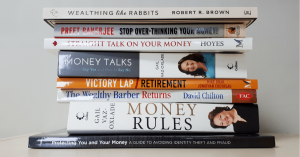When I first started investing eighteen years ago, I seriously had no idea how to start the investing process. I had graduated with a degree in investments, so I could crunch some of the numbers and had a good understanding of stocks. In fact, I worked at an investment bank and my job was running complex financial scenarios for the mergers and acquisitions department. But even with all of those accolades, I didn’t know exactly how to get started investing.
Today, investing is much easier than it was back then. You don’t have to fill out paperwork and call a broker anymore. Now, you only need to open an online account and click a few buttons to actually invest your money.
For those of you that find yourself in the same position I was back then, here is a simple guide to how you can start investing your money.
Start by saving at least $1,000 before you start. The minimum for many online brokers is around this amount and if you invest with much less your transaction fees will be a higher percent of your investment. Once you have the money saved, you can hold it in your checking account and move on to the next step.

Choose a broker to invest through. I recommend you choose an online broker to get you started. Heck, almost all brokers are online now, so let me say that you should choose an online discount broker. Discount brokers these days offer everything you need to invest. When choosing a broker, try to find some unbiased reviews of the various brokers to see which one’s cover the options that you want the most. For example, if you are looking to invest in mutual funds, check the selection that each broker offers. Also check the fees and account minimums. Some brokers charge inactivity fees if you don’t trade at least once a quarter. Personally, I have used Schwab, Ameritrade and E*Trade. E*Trade is my current and favorite. I had very slow trading times with Ameritrade, but that was over ten years ago. I like the interface and E*Trade and they allow me to have all of my assets there, including a broker account, a stock option account, a 401k rollover, education IRAs, roth IRAs and a self employed 401k plan. They also offer research, which I like to view when looking for new ideas. If you really have no idea how to choose a broker, you could consider going to a retail branch and having them help you setup an account. Companies like Edward Jones are located even in many small towns around the U.S. However, these retail brokers will be significantly more expensive to use.
Open your account and fund it. You can typically open a new account using an online interface through the broker’s website. When choosing your account, you should learn the difference between a margin and cash account and research the options that you have available before you select them. I recommend opening a margin account, just in case you ever want to use leverage or purchase options, down the road that is. When you finish creating your account, the broker will give you specific instructions as to how to fund your account. The easiest is to set up an ACH link between your bank account and the broker. You’ll be able to move money between the two accounts that way. You know, add money to your account during the year and then remove money when you need to pay taxes or make non-stock related investments.
Choose an investment and buy it. Your first investment can be either a stock or a fund. Ninety nine percent of advisors would tell you that you should purchase a diversified mutual fund, but if you only have a thousand dollars or less, it really doesn’t matter that much. You should buy something that you are interested in to encourage you to pay more attention to investing. With that said, don’t just start speculating. However, if you want to buy a stock of a company that you really like, now might be a good time. As your assets grow, diversification becomes extremely important though. And starting habits early is probably a good idea, so if you don’t know what to buy, just look for a low cost mutual fund or ETF that is somewhat diversified and buy it. To buy, simply login to your brokerage account and place a trade. Don’t worry about limit orders yet, just click on “buy at market” or other similar option your broker lists.
Save more and diversify more. Now that you’ve started investing, it’s time to watch your portfolio grow. Keep saving money to add to your investment account and continue to diversify into different types of investments. Make sure to keep reading articles like this so that you can continue to learn more about investing and improve your investing prowess.
Getting started with your investments is that easy. Do you have any other questions or have something to add? If so, please leave us a comment.



